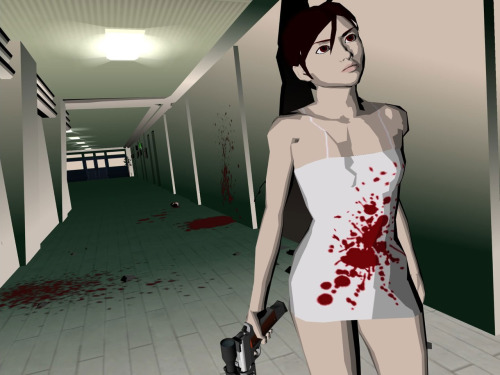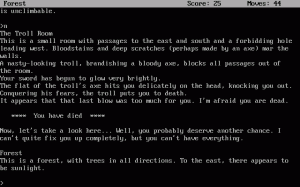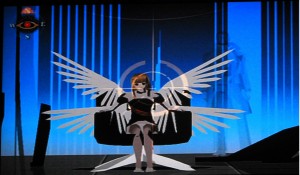97th played so far

Genre: MMORPG
Platform: PC
Year of Release: 2004
Developer: Blizzard Entertainment
Publisher: Blizzard Entertainment
Here it is. The big one. The elephant in the room. That one game everyone in the modern day has heard of.
Sure, other games may be more famous. More iconic. But also, to be fair, older. World of Warcraft, however, has reached a level of cultural awareness, however, that few games seem to match, and it’s one of the few games where this many gamers get addicted, losing days of their life to playing, without being the type to do so on many other games.
For what it’s worth, this game isn’t the first of its kind, nor the last, and prepare for some comparisons to be drawn with Guild Wars. What it comes down to is that you’re one of many adventurers dropped into a fantasy world – a very detailed one, considering the legacy the original Warcraft game has left and build on in later games – which you have to defend from many evil creatures, or where you have to support them, unless you want PvP and fight other players like you. Supposedly fun fantasy RPGing together with many other people.
Our Thoughts
Now, I must admit some bias here, as I know the strategy games set in the same Warcraft world quite well and, to be honest… I love them. They were the ones who pushed strategy development as much as the Command & Conquer did, with more of a focus on characters and characterization and far more a quest-like setup. This is an extension of this, which continues the RPG focus while I suppose the MMO angle sort of asks for more strategy. The style certainly matches Warcraft 3 quite closely, in graphics and character interaction.
Where do we start? Graphics first. They’re not too bad (considering this game is from 2004): not too realistic, as you can’t really be when you have a world filled with orcs, walking bulls, elves and the living dead. Slightly cartoony – partially by design, partially because that’s the best we could get then. They are still beautiful, however, especially during the few sequences where you fly around the world to get from place to place… or because your spirit animal allows you to go there, as my Tauren hunter soon discovered.
There is no doubting that with the graphical style that Blizzard employed in this game, which to be fair has been muted in order to cope with the millions of players, does help to create an atmosphere. Whether it be my avatar running through verdant forests or Jeroen’s minotaur-thing bounding over plains as birds peck at his head. They’re called Tauren. I’ll show you their side mission when we get to covering Warcraft 3. Can’t wait (!)
Yes… what this game does show is that Blizzard (as followers of their work know) know what they’re doing. The games may not always be the most innovative, but they’re great, and every game they’ve made became big in their genre. Whether it’s the single player action RPG, Diablo, or the strategy Warcraft and Starcraft, people will have heard of them. And this, too, shows through in World of Warcraft.
It won’t look or feel as sophisticated as some games. A lot of the quests are simple kill and fetch. But the hours passed fast when we were playing.
It really was a case of looking up and the sun had already set, there is no denying the addictive nature of the game. However, even though I lost quite a bit of time to it I have not had any real inclination to return to my night elf’s quest to deliver owl pelts (or whatever it is).
Everything about this game has the hallmarks of an addict’s nectar. The experience point fly in thick and fast in the first hour meaning that you start customising your avatar’s look and abilities right from the off… yet it is not so easy that it feels like a pushover. The fact that experience required ramps up incredibly quickly goes unnoticed.
It is also a great touch that ever race has their own beginning story so it feels like new experience whenever you want to experiment with new characters. Something that I did enjoy over Guild Wars since there all the characters started off in the same place. However, for me that was the only place where World of Warcraft had a one up over Guild Wars.
I know that there was only a year between they were released but for me the difference in playability was staggering. Part of this feels like a difference in focus. While both games features fantasy elements, Guild Wars feels fairly low key, with some magical abilities, creatures and sights, but mostly fairly natural elements. World of Warcraft, at the same time, is high fantasy. Different, weird races all mingle, especially once you get past the starter village, you use more strange magical abilities and find and deal with more supernatural threats. There seem to be many more fantasy elements in this world when compared to Guild Wars. Also add to that the vastly superior graphics and ambient sounds then I really do believe that Guild Wars should have had an even more widespread appeal compared with World of Warcraft… but it never took off in the same fashion.
In a way, all the MMORPGs released after World of Warcraft were too late. It got the attention, it got the players, and it’s hard to find the time to play more than one. At the same time, World of Warcraft is helped by its relative simplicitly. There’s stuff to learn, but the stories and texts seem to be less than Guild Wars. Less tutorials, less ‘thou must’s and less attempts to be epic. There’s a game here, and fun lore bits in between, but it doesn’t require too much out of the way. Not saying the game is simple – there’s a lot of skill and learning involved – but it starts off being easier to learn. Add to that that in the end, the appeal of an MMORPG is the people who play it (what else would be the point?) and you see that in this genre, players attract more players.
What did not help is that in the wake of WoW‘s success the marketplace became saturated with other MMORPGs just waiting to cash in on the action. So which horse do you back? The big one that already has an established community or a newer one where there is a possibility that the servers could be shut down at any moment. And in the end, I don’t think it’s a bad horse to back. Sure, others have been great, but this, in the end, is addictive, fun and gives you plenty of interaction that you would want. With 11+ million users to go on your quests with it really is no contest is it?
Final Thoughts
At the end, 11 million people can’t be wrong, can they? And if you’re not sure, World of Warcraft is now free up to level 20, so you can just try it for yourself. Can’t hurt you, can it?
In the end, this is the one big MMORPG, the one all refer to now, and it’s a straightforward, fun, high fantasy game. It doesn’t look as great or sophisticated as Guild Wars, and for us it’s inferior, but in the end it’s just as much about where you friends are. You’ll have a good time no matter what.



 I loved Guild Wars completely which meant that when it came to playing the Mac Daddy of them all I had such high expectations… but these were not met at all. In fact I did not enjoy it and was unable to get hooked by the apparently magnetic pull of World of Warcraft. I never even thought of playing it again after my original gaming session and for a format that relies so much on monthly subscriptions I was truly disappointed.
I loved Guild Wars completely which meant that when it came to playing the Mac Daddy of them all I had such high expectations… but these were not met at all. In fact I did not enjoy it and was unable to get hooked by the apparently magnetic pull of World of Warcraft. I never even thought of playing it again after my original gaming session and for a format that relies so much on monthly subscriptions I was truly disappointed.












